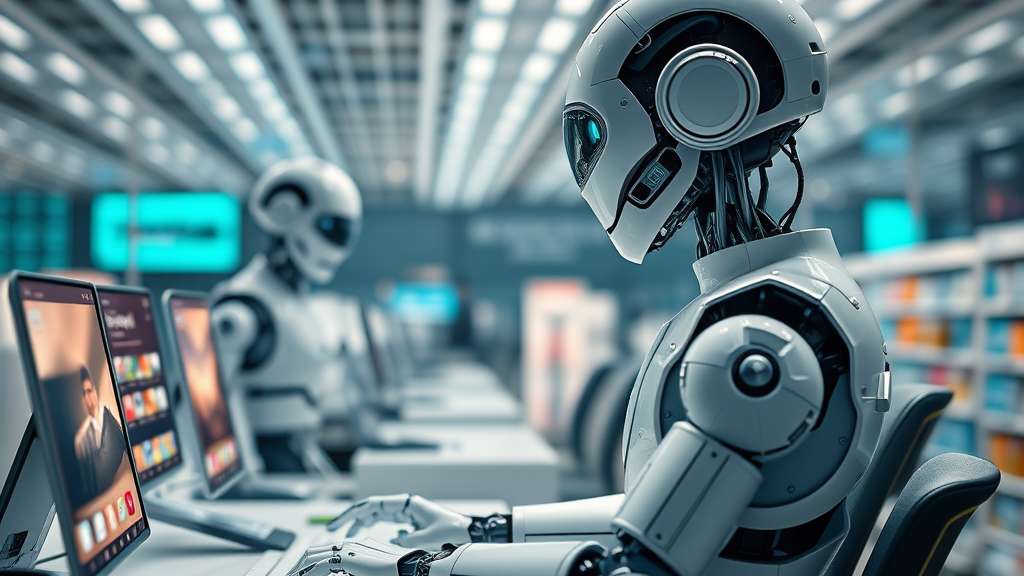The rapid advancement of artificial intelligence has created a seismic shift in the global job market, with remote workers in specific industries facing unprecedented risks. As companies prioritize cost efficiency and operational scalability, AI systems are increasingly deployed to handle tasks once performed by human remote employees. This analysis identifies the sectors where AI poses the greatest threat to remote workforces, drawing on insights from leading labor economists, AI researchers, and recent industry trends.
Customer Service and Support
AI-powered chatbots and virtual assistants have become sophisticated enough to handle 85-90% of routine customer inquiries. These systems analyze historical interaction data to provide context-aware responses, reducing the need for human agents in roles involving password resets, order tracking, or basic troubleshooting. Major corporations like Amazon and Bank of America now resolve 60% of customer service requests through AI without human intervention. While complex emotional support scenarios still require human nuance, the majority of tier-1 support roles-particularly those conducted remotely-are being phased out through natural language processing advancements.
Data Processing and Analysis
Remote data entry clerks face 95% automation risk according to McKinsey projections. Modern AI systems can process structured data 200x faster than humans while maintaining 99.8% accuracy rates. This displacement extends beyond basic data entry to roles in business intelligence and market research, where machine learning algorithms identify patterns in datasets too large for manual analysis. Insurance claims processing, medical billing, and financial record-keeping-all common remote occupations-are increasingly handled by AI systems that cross-reference multiple databases in real-time.
Administrative and Clerical Work
The automation of scheduling, email management, and document processing has made 40% of administrative tasks machine-executable. AI virtual assistants like Microsoft Copilot now coordinate meetings across time zones, prioritize inbox communications, and generate meeting minutes-functions traditionally managed by remote executive assistants. Legal document review, once a staple of remote paralegal work, can be completed by AI in 1/50th the time with higher consistency.
Accounting and Financial Services
Basic bookkeeping roles face 70-80% automation potential due to AI-driven accounting platforms. Intuit's QuickBooks AI handles invoice processing, expense categorization, and tax preparation with minimal human oversight. Remote financial analysts specializing in routine reporting are being replaced by algorithms that generate earnings forecasts and risk assessments using real-time market data. Even complex tasks like auditing see AI adoption, with systems flagging anomalies in financial statements 30% more effectively than human reviewers.
Content Creation and Digital Media
AI text generators now produce 60% of boilerplate content for news outlets and marketing agencies. Remote writers creating product descriptions, social media posts, or basic news briefs compete against systems that generate 500 words in 12 seconds with SEO optimization. Graphic design platforms like Canva's Magic Studio automate layout creation, threatening entry-level remote design jobs. While creative direction remains human-driven, production-level content roles are disappearing-the Associated Press already automates 4,000 quarterly earnings reports using AI.
Information Technology and Technical Support
Level-1 IT support roles handled remotely face 80% automation risk as AI troubleshooters diagnose network issues and deploy fixes autonomously612. Cloud providers like AWS use AIops systems to monitor infrastructure 24/7, reducing demand for remote sysadmins in routine maintenance. Even coding isn't immune-GitHub Copilot assists in writing 40% of new code across repositories, displacing junior developers in basic programming tasks.
Human Resources and Recruitment
AI recruitment platforms now handle 75% of initial candidate screening through resume parsing and video interview analysis. Remote HR specialists in benefits administration are being replaced by automated systems that manage enrollment, claims processing, and compliance reporting. Payroll processors face extinction as AI integrates time-tracking data with banking APIs to execute payments without human intermediaries.
The Survival Paradox: Education vs. Automation Risk
Contrary to assumptions, 23% of jobs requiring bachelor's degrees show high AI exposure compared to 4% of manual labor roles. This stems from AI's superior performance in cognitive tasks involving pattern recognition and data synthesis. Remote workers with specialized certifications but repetitive workflows-such as medical coders or compliance officers-face greater risks than tradespeople adapting to dynamic physical environments.
Geographic Disparities in AI Displacement
Developing nations face heightened vulnerability, with 68% of outsourced remote jobs in data processing and customer service at immediate risk. Countries like India and the Philippines, which built economic models around business process outsourcing, could see 14 million jobs lost to AI by 2025. By contrast, advanced economies are creating AI oversight roles-the EU's AI Act alone mandates 50,000 new compliance positions to regulate automated systems.
The Road Ahead: Hybrid Human-AI Roles
Surviving industries will increasingly blend AI efficiency with human judgment. Remote workers in marketing might use AI for consumer analytics but provide campaign creativity. Medical coders could transition to AI training roles, refining diagnostic algorithms. This evolution requires massive upskilling-the World Economic Forum estimates 40% of workers will need 6+ months of retraining by 2027 to remain employable. Those adapting fastest to collaborative AI tools will define the next era of remote work.
